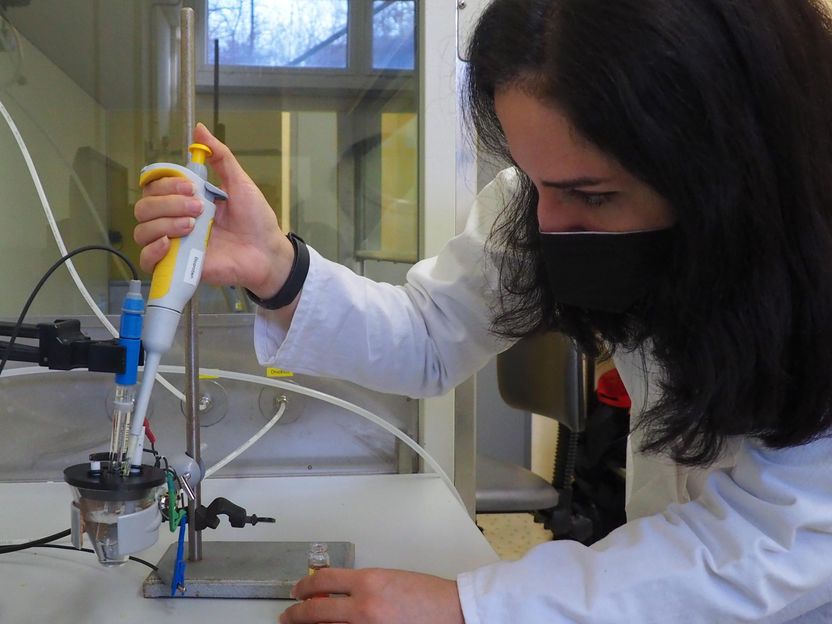New tabletop detector 'sees' single electrons
Magnet-based setup may help detect the elusive mass of neutrinos
MIT physicists have developed a new tabletop particle detector that is able to identify single electrons in a radioactive gas.
As the gas decays and gives off electrons, the detector uses a magnet to trap them in a magnetic bottle. A radio antenna then picks up very weak signals emitted by the electrons, which can be used to map the electrons' precise activity over several milliseconds.
The team worked with researchers at Pacific Northwest National Laboratory, the University of Washington, the University of California at Santa Barbara (UCSB), and elsewhere to record the activity of more than 100,000 individual electrons in krypton gas.
The majority of electrons observed behaved in a characteristic pattern: As the radioactive krypton gas decays, it emits electrons that vibrate at a baseline frequency before petering out; this frequency spikes again whenever an electron hits an atom of radioactive gas. As an electron ping-pongs against multiple atoms in the detector, its energy appears to jump in a step-like pattern.
"We can literally image the frequency of the electron, and we see this electron suddenly pop into our radio antenna," says Joe Formaggio, an associate professor of physics at MIT. "Over time, the frequency changes, and actually chirps up. So these electrons are chirping in radio waves."
Formaggio says the group's results, published in Physical Review Letters, are a big step toward a more elusive goal: measuring the mass of a neutrino.
A ghostly particle
Neutrinos are among the more mysterious elementary particles in the universe: Billions of them pass through every cell of our bodies each second, and yet these ghostly particles are incredibly difficult to detect, as they don't appear to interact with ordinary matter. Scientists have set theoretical limits on neutrino mass, but researchers have yet to precisely detect it.
"We have [the mass] cornered, but haven't measured it yet," Formaggio says. "The name of the game is to measure the energy of an electron - that's your signature that tells you about the neutrino."
As Formaggio explains it, when a radioactive atom such as tritium decays, it turns into an isotope of helium and, in the process, also releases an electron and a neutrino. The energy of all particles released adds up to the original energy of the parent neutron. Measuring the energy of the electron, therefore, can illuminate the energy - and consequently, the mass - of the neutrino.
Scientists agree that tritium, a radioactive isotope of hydrogen, is key to obtaining a precise measurement: As a gas, tritium decays at such a rate that scientists can relatively easily observe its electron byproducts.
Most read news
Organizations
Other news from the department science

Get the analytics and lab tech industry in your inbox
By submitting this form you agree that LUMITOS AG will send you the newsletter(s) selected above by email. Your data will not be passed on to third parties. Your data will be stored and processed in accordance with our data protection regulations. LUMITOS may contact you by email for the purpose of advertising or market and opinion surveys. You can revoke your consent at any time without giving reasons to LUMITOS AG, Ernst-Augustin-Str. 2, 12489 Berlin, Germany or by e-mail at revoke@lumitos.com with effect for the future. In addition, each email contains a link to unsubscribe from the corresponding newsletter.




















































